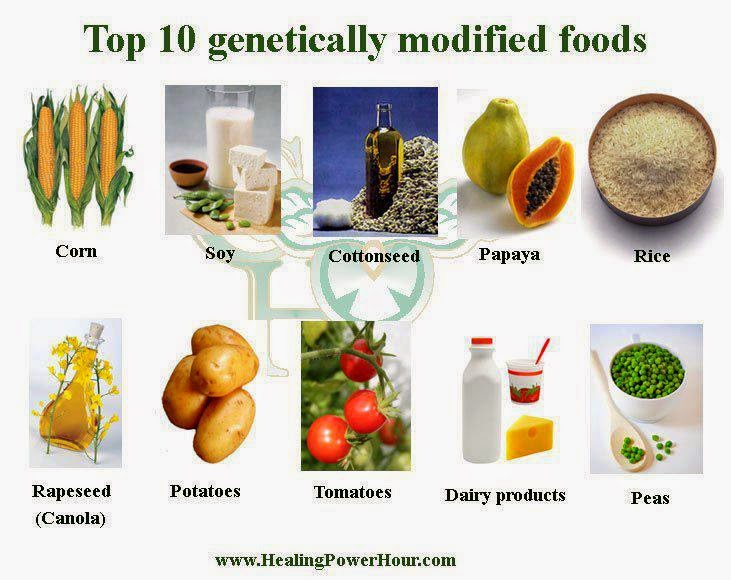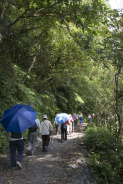

卫生福利部食品药物管理署在《联合报》等发布广告〈基改食品致癌?证据不足!〉后,主妇联盟环境保护基金会也发明了〈「假科学之名行广告之实」-本会针对食药署0618广告之声明〉响应。
虽然我个性内向害羞不好争论,不过想想这也算是我的专业领域之一,我的研究主题之一是演化基因体学,还是来谈谈小弟对这个议题的浅见。不过,诚如我过去一直秉持的立场,我一定还是要两边都不讨好。如果想从这里找到支持基改作物明确的好坏优劣,我担心您会失望了。只是我和卫福部、食药署及主妇联盟没有直接关系就是了,算是尽量客观中立了吧。
首先,我认为支持不支持基改作物,其实说穿了,也只是一个风险的概念,因为基改作物本身并无所谓绝对的好坏,高收益可能伴随着高风险,高风险也可能有高获益。如果只要有坏处就舍弃,容我很不客气地建议,我们干脆把全世界的作物,无论有没有基因改造,全都烧光光,让大部分人类饿死,剩下的回到田野过狩猎采集的生活。不过这么做很显然是弊大于利的蠢事!
我们人类在非洲草原长达几百万年演化出来的脑袋,是为了趋吉避凶和繁衍后代用的,要用它来理性地判断风险,是不容易但还是可以做得的。我们害怕一些事物,不是因为它有多糟糕和恐怖,有时候仅是因为不熟悉而已。如果说基因作物能有多坏,那么比基因作物更坏的东西是否也要消灭?
如果如此,我建议立法把「糖」比照烟酒类作管制。我这么说已经算标准很宽松了,因为抽烟,不管一手还是二手,都有高度致癌风险,基改作物根本无法超越吧?拥有和吸食烟草违法了吗?那糖呢?不管是蔗糖还是高果糖糖浆,都是加工食品和居家必备的,可是我们人类无法直接把果糖作为燃料(蔗糖是一分子的果糖加一份子的葡萄糖聚合而成的双糖),简单来说,大部分吸收的果糖是在肝脏代谢成脂肪的前驱物,这也是现代人脂肪肝和肥胖盛行的元凶之一,详情可参阅美国加州大学旧金山分校教授罗伯.鲁斯提(Robert H. Lustig)的《杂食者的诅咒:当一卡路里不是一卡路里,食品工业的黑心糖果屋》(Fat Chance : Beating the Odds Against Sugar, Processed Food, Obesity, and Disease)。
「糖」对人类健康的戕害,威力恐不下于基改作物,可是没几个正常人会想提案把「糖」比照「烟酒」来管制吧?我们不怕「糖」却担心基因作物,不是因为基因作物已经造成了大规模的健康问题,如果是的话,请立法管制「糖」的摄取吧,而是因为我们早就对「糖」熟悉得再不能熟悉了,「糖」已经成为我们日常生活常用的食材,我们不会害怕「糖」,不是因为它对我们的健康无害,而是因为我们太习惯了使用「糖」。
基改食品致癌的证据确实是不足的。基改作物或许有其它坏处,基改作物可能会造成一些生态问题[1-28],影响一些野生植物和昆虫的生态,可是对人类的害处,始终没有直接证据[29-35]。美国超市粗估有高达七八成的加工食物都含有基因作物的成份。由于美国法律没有要求标示基改作物的成份,因此几乎只在没有标「Non-GMO」,就一定含有基因作物的成份。美国消费者吃了这些食品已有廿年了,还未发现有增加疾病的风险。科技也在进步,我们可以利用来探讨基改作物有无有害成份的工具也比过去还多,我看不出有任何需要增加担忧的理由。
然而,我还是无法告诉你,基改作物一定无害,因为没有找到证据证实基因作物有害,和找到证据证实基因作物无害,这两句话看似没啥不同,可是逻辑完全不同。没有找到证据,不代表没有,也就是说没有找到证据说基改作物致癌,不代表基因作物就一定不会致癌。只要找到一只天鹅是黑的,那么天鹅就不会只有白的,只是没有找到黑天鹅,并不代表天鹅就一定是白的。在科学上,要证实「没有」这件事,比证实「有」这件事难很多。
所以,我们是要作「有罪推定」还是「无罪推定」呢?这关系到的,并非是科学问题,而是价值观取舍。美国这个相对新兴的国家,比较愿意接受新事物,冒险创新的精神高,他们对新事物在态度上采取「无罪推定」,也就是说没有证据显示有害,先假设无害,所以他们创新性高,可是有些东西多年后却发现有害;而欧洲在态度上比较采取「有罪推定」,还未证实无害前,先假定有害,所以创新性低,可是比较不容易出大错。
我要再次强调,像基改作物这种高度争议的议题,甚至在学界都还未有共识前,有立场并不是问题,但是要能适当地陈述什么是已知的事实,还有什么是未知的,凭什么已知的事实做出决策。在决策过程中,就要涉及价值观判断,因为这些事物无所谓完全的好坏,我们会根据自己的信念,在价值的取舍上对不同参数做轻重的加权,综合评估而得出支持或反对的决定。这世界上很少有完全坏的事物,高收益伴随着高风险,只是我们要能准确判断风险,再依价值观和承受能力作出选择。只是科学的态度是一分证据说一分话,我看不出食药署的广告内在任何重大科学问题,除了几句表达不清确的话,例如基改和传统育种还是有差的,并非没有不同。
很多人反对基改作物,是因为基改作物不是天然的,可是我们人类文明社会现在吃的主食,其实没几样是天然的。我们吃的食物,就算没有用基因工程作基因改造,也早已影响了我们的健康,道家气功就有门派就主张要长生不老就是不吃不喝,不过还没有人办到吧?这世界上并不存在完美的食物,食物之间对健康来说只有相对好坏的差别。
演化生物学家贾德.戴蒙(Jared Diamond)成功地在《枪炮、病菌与钢铁:人类社会的命运》(Guns, Germs and Steel: The Fates of Human Societies)用生物地理学的概念解释了为何人类的文明之起源即罕见又特殊。无论理由为何,人类进入农耕时代后,食物的种类就大量减少,我们人类的主要粮食作物就手指也就数得出的几种而已,例如小麦、大麦、燕麦、黑麦、稻米、玉米、马铃薯、高粱、小米,蔬菜水果等也占了所有植物的冰山一角的一角而已,驯养的动物也廖廖无几,就牛、羊、猪、鸡、鸭、鹅。相较我们十万年前演化出来的智人祖先相比,人类文明在大约一万年后进入农耕社会后,我们的食物种类和营养就异常的贫乏。
人类自从有农耕时代开始,就已经改造了所有作物了,没有任何农作物是纯天然的。农耕本身就不是多么「正常」的行为,详细的论述可读人类演化遗传学家史宾赛.韦尔斯(Spencer Wells)的《潘多拉的种子:人类文明进步的代价》(Pandora's Seed: The Unforeseen Cost of Civilization)及贾德.戴蒙的《昨日世界:找回文明新命脉》(The World Until Yesterday: What Can We Learn from Traditional Societies?)和历史学家菲立普.费南德兹─阿梅斯托(Felipe Fernandez-Armesto)的《食物的历史—透视人类的饮食与文明》(Food: A History)(请参见〈潘多拉的种子之代价〉、〈昨日世界的是是非非〉和〈食物的历史-吃的意义〉)。不过人类也非唯一会农耕的动物,居住于中南美洲亚马逊雨林的切叶蚁(Leafcutter Ant)会把切下的叶子被搬进蚁穴,还会被弄碎成黏糊状的叶糊,并用来培养真菌,而这些真菌会成为切叶蚁的食物来源,这也算是农耕哦!
我们和切叶蚁最大的差别,可能是我们不仅只能选择少数动植物来耕作和驯养,我们也利用各种选汰和育种的方法来改造了农作物的基因体,使得它们的遗传背景和祖先相差不少。没有任何农作物在自然界是正常的,它们不是要结实结得又多又饱满来让人类吃的。就我研究的家鸡演化而言,不需要基因改造,人类就育出年产约200-300颗蛋的蛋鸡,而牠们的祖先红色丛林鸡一年只生约12颗蛋而已。还有只要醒着就吃个不停的肉鸡,因为牠们已搞不清楚自己究竟饱了没。
我们不仅改造了农作物的基因体,甚至也改造了我们部分的基因体,我们人类为了适应农耕社会,我们增加了分解淀粉的酵素的基因数[36, 37],一些族群也演化成唯一能够在断奶后饮用乳汁的哺乳动物[38-45]。人类对农作物基因体究竟造成了什么影响,它们又怎么影响我们的基因体,是方兴未艾的研究,我们知道的甚少。
既然我们已透过选汰和育种的方法来大幅改造了农作物的基因体,我们把几个基因塞进农作物里,算什么大不了的事了?主妇联盟指出,『基因工程为透过病毒或细菌等媒介植入特定基因,打破生物界「不同种生物无法互换DNA」的规则,与传统育种在同种生物间进行培育得到目标作物是完全不一样的概念与技术,这已是一般民众都能理解的基础生物学。基因工程与传统育种绝对不是食药署所宣称的「没什么不同」。』这里头有很大的问题,就是指称生物界里,不同种生物无法在自然的情况下互换DNA,是错的!
生物学家早就知道不同物种之间能够透过基因水平转移〔Horizontal gene transfer,HGT,或称基因侧向转移(lateral gene transfer,LGT)〕的方式交换基因,自然界中已知从不同物种,甚至不同界(kingdom)的生物之间取得基因,已知的真核生物案例就有双子叶的Striga hermonthica从单子叶的高粱取得的基因[46]、蚜虫从真菌取得制造类胡萝卜素的基因[47, 48]、疟原虫从人类偷取的基因[49]、一种甲虫(Coffee borer beetle)从细菌取得的基因HhMAN1 [50, 51]等等。
我们人类仅是聪明地藉助各种方法,把这个过程按照人类,而非大自然,的意思来模仿大自然的这个「正常」过程而已。这样作并非不会制造问题,可是我们要想的是究竟这么做是利大于弊吗?
老实说,我也很讨厌孟山都的大生技企业的很多作法,有些基改作物也确实被滥用,例如把农作改造得更耐他们公司出的农药等等,或者试图掌控第三世界的农业命脉的行径等等。不过有些环保团体提出的主张却也未必实际,例如立法大幅提高基改作物安全测试的门坎,看似有道理,却反而可能造成大企业更容易垄断,因为有些成本小公司反而负担不起,搞不好弄得有创新的小公司只能被大企业收购一途,就像制药产业一样。通往地狱的路为善意所铺的,就是这个意思。不过政策上,问题过于复杂,在此就不展开讨论。
基改作物对人类和其它生物的影响,也是错综复杂的。有研究发现基改作物里抗虫害的成份对其他野生昆虫的生存也不利,有些益虫也受到了影响。可是公视的记录片《蜂狂》(Toxic Bees- Nature's Mayday)却也指出,因为害虫利基改作物的抗虫成份有了抗性,让农民改种非基改作物而且改用系统性农药,可能是导致北美蜜蜂大量死亡的原因之一,甚至还可能增加了过动儿。所以判断基改作物的利弊也不是件简单的事,凡事皆可能是双面刃。
我们很容易批评现在工业化的农业等等,可是我们也得了解到,要喂养六、七十亿人口不是件简单的事。我在这篇文章中〈回应〈发明疾病的人?〉〉中指出,现代医疗和公共卫生是现代人能够活得健康长寿的原因之一,其实只说对了一半,另一大原因还有干净充足的饮水和食物,只是当时不想扯太多而模糊焦点。这要归功的除了净水及输送技术,还有保存食物的技术(如防腐保鲜技术和冰箱等),当然还有生产充足粮食的绿色革命(Green Revolution)。
改良品种、大量使用化肥和水利灌溉的绿色革命有弊也有利,可是我们能够突破马尔萨斯(Thomas R. Malthus,1766-1834)的诅咒,拜的就是农耕技术的突破。可是我们今天再度面对的是人口不仅逐渐上升,新兴国家的中产阶级也需要更富足的生活,可是大量可耕地反而因为都市化、工业污染、盐化等而逐年丧失,加上全球气候变迁火上浇油,我们很可能需要再一场绿色革命,才能提升甚至维持粮食的稳定供应量,才能让穷人也不致于挂饿。基改作物如果未来朝着提产,以及适应不良土地(如盐化)、耐热抗旱等等,我们才有更多武器对抗未来严峻的挑战!当然,依靠传统育种选植的方式也不是不能达成,只是这些方法较耗时,而我们最缺乏的东西之一也就是时间XD
我想,对于基改作物,我们没有理由完全排斥,明确的标示或许是个办法,但是却不容易办到,因为上超市买的东西,我们可以明确看到标示,去便当店吃饭,总不会要求老板一样一样说明有无基改作物成份吧?因此政府在源头把关,或许也很重要。还有,如果真的在乎健康,少吃加工食品,多吃在地当季的食物,吃的食物种类愈多样愈好,可能比担心基改作物还实际吧!
参考文献:
1) Conner AJ, Glare TR, Nap JP (January 2003). "The release of genetically modified crops into the environment. Part II. Overview of ecological risk assessment". Plant J. 33 (1): 19–46. doi:10.1046/j.0960-7412.2002.001607.x. PMID 12943539.
2) Wolfenbarger LL, Phifer PR (December 2000). "The ecological risks and benefits of genetically engineered plants". Science 290 (5499): 2088–93. doi:10.1126/science.290.5499.2088. PMID 11118136.
3) Brookes, Graham and Barfoot, Peter (May 2012) GM crops: global socio-economic and environmental impacts 1996-2010 PG Economics Ltd. UK, Retrieved 3 January 2012
4) Dorsch, J.A; Candas, M; Griko, N.B; Maaty, W.S.A; Midboe, E.G; Vadlamudi, R.K; Bulla Jr, L.A (2002). "Cry1A toxins of Bacillus thuringiensis bind specifically to a region adjacent to the membrane-proximal extracellular domain of BT-R1 in Manduca sexta:". Insect Biochemistry and Molecular Biology 32 (9): 1025–36. doi:10.1016/S0965-1748(02)00040-1. PMID 12213239.
5) Romeis, Jorg; Hellmich, Richard L.; Candolfi, Marco P.; Carstens, Keri; De Schrijver, Adinda; Gatehouse, Angharad M. R.; Herman, Rod A.; Huesing, Joseph E.; McLean, Morven A.; Raybould, Alan; Shelton, Anthony M.; Waggoner, Annabel (2010). "Recommendations for the design of laboratory studies on non-target arthropods for risk assessment of genetically engineered plants". Transgenic Research 20 (1): 1–22. doi:10.1007/s11248-010-9446-x. PMC 3018611. PMID 20938806.
6) Romeis, Jorg; Bartsch, Detlef; Bigler, Franz; Candolfi, Marco P; Gielkens, Marco M C; Hartley, Susan E; Hellmich, Richard L; Huesing, Joseph E; Jepson, Paul C; Layton, Raymond; Quemada, Hector; Raybould, Alan; Rose, Robyn I; Schiemann, Joachim; Sears, Mark K; Shelton, Anthony M; Sweet, Jeremy; Vaituzis, Zigfridas; Wolt, Jeffrey D (2008). "Assessment of risk of insect-resistant transgenic crops to nontarget arthropods". Nature Biotechnology 26 (2): 203–8. doi:10.1038/nbt1381. PMID 18259178.1
7) Losey, John E.; Rayor, Linda S.; Carter, Maureen E. (1999). "Transgenic pollen harms monarch larvae". Nature 399 (6733): 214. doi:10.1038/20338. PMID 10353241.
8) Sears MK, Hellmich RL, Stanley-Horn DE, Oberhauser KS, Pleasants JM, Mattila HR, Siegfried BD, Dively GP (October 2001). "Impact of Bt corn pollen on monarch butterfly populations: a risk assessment". Proc. Natl. Acad. Sci. U.S.A. 98 (21): 11937–42. Bibcode:2001PNAS...9811937S. doi:10.1073/pnas.211329998. JSTOR 3056827. PMC 59819. PMID 11559842.
9) Gatehouse AM, Ferry N, Raemaekers RJ (May 2002). "The case of the monarch butterfly: a verdict is returned". Trends Genet. 18 (5): 249–51. doi:10.1016/S0168-9525(02)02664-1. PMID 12047949.
10) Lovei GL, Andow DA, Arpaia S (April 2009). "Transgenic insecticidal crops and natural enemies: a detailed review of laboratory studies". Environ. Entomol. 38 (2): 293–306. doi:10.1603/022.038.0201. PMID 19389277.
11) Shelton AM, Naranjo SE, Romeis J, Hellmich RL, Wolt JD, Federici BA, Albajes R, Bigler F, Burgess EP, Dively GP, Gatehouse AM, Malone LA, Roush R, Sears M, Sehnal F (June 2009). "Setting the record straight: a rebuttal to an erroneous analysis on transgenic insecticidal crops and natural enemies". Transgenic Res. 18 (3): 317–22. doi:10.1007/s11248-009-9260-5. PMID 19357987.
12) Carpenter JE (2011). "Impact of GM crops on biodiversity". GM Crops 2 (1): 7–23. doi:10.4161/gmcr.2.1.15086. PMID 21844695.
13) Icoz, Isik; Stotzky, Guenther (2008). "Fate and effects of insect-resistant Bt crops in soil ecosystems". Soil Biology and Biochemistry 40 (3): 559. doi:10.1016/j.soilbio.2007.11.002.
14) Bohan, D. A; Boffey, C. W.H; Brooks, D. R; Clark, S. J; Dewar, A. M; Firbank, L. G; Haughton, A. J; Hawes, C.; Heard, M. S; May, M. J; Osborne, J. L; Perry, J. N; Rothery, P.; Roy, D. B; Scott, R. J; Squire, G. R; Woiwod, I. P; Champion, G. T (2005). "Effects on weed and invertebrate abundance and diversity of herbicide management in genetically modified herbicide-tolerant winter-sown oilseed rape". Proceedings of the Royal Society B: Biological Sciences 272 (1562): 463. doi:10.1098/rspb.2004.3049.
15) Strandberg, Beate; Bruus Pedersen, Marianne; Elmegaard, Niels (2005). "Weed and arthropod populations in conventional and genetically modified herbicide tolerant fodder beet fields". Agriculture, Ecosystems & Environment 105: 243. doi:10.1016/j.agee.2004.03.005.
16) Gibbons, D. W; Bohan, D. A; Rothery, P.; Stuart, R. C; Haughton, A. J; Scott, R. J; Wilson, J. D; Perry, J. N; Clark, S. J; Dawson, R. J.G; Firbank, L. G (2006). "Weed seed resources for birds in fields with contrasting conventional and genetically modified herbicide-tolerant crops". Proceedings of the Royal Society B: Biological Sciences 273 (1596): 1921. doi:10.1098/rspb.2006.3522.
17) Chamberlain, D.E.; Freeman, S.N.; Vickery, J.A. (2007). "The effects of GMHT crops on bird abundance in arable fields in the UK". Agriculture, Ecosystems & Environment 118: 350. doi:10.1016/j.agee.2006.05.012.
18) Pleasants, John M.; Oberhauser, Karen S. (2013). "Milkweed loss in agricultural fields because of herbicide use: Effect on the monarch butterfly population". Insect Conservation and Diversity 6 (2): 135. doi:10.1111/j.1752-4598.2012.00196.x.
19) Relyea RA (2005). "The Impact of Insecticides and Herbicides on The Biodiversity and Productivity of Aquatic Communities". Ecological Applications 15 (2): 618–627. doi:10.1890/03-5342. PMID 17069392.
20) Lu Y, Wu K, Jiang Y, Xia B, Li P, Feng H, Wyckhuys KA, Guo Y (May 2010). "Mirid bug outbreaks in multiple crops correlated with wide-scale adoption of Bt cotton in China". Science 328 (5982): 1151–4. Bibcode:2010Sci...328.1151L. doi:10.1126/science.1187881. PMID 20466880.
21) Zhao JH, Ho P, Azadi H (August 2012). "Erratum to: Benefits of Bt cotton counterbalanced by secondary pests? Perceptions of ecological change in China". Environ Monit Assess 184 (11): 7079. doi:10.1007/s10661-012-2699-5. PMID 22864609.
22) Stone, Glenn Davis (2011). "Field versus Farm in Warangal: Bt Cotton, Higher Yields, and Larger Questions". World Development 39 (3): 387–98. doi:10.1016/j.worlddev.2010.09.008.
23) Chilcutt, Charles; Tabashnik, BE. (18 May 2004). "Contamination of refuges by Bacillus thuringiensis toxin genes from transgenic maize". Proceedings of the National Academy of Science of the United States of America 101 (20): 7526–7529. Bibcode:2004PNAS..101.7526C. doi:10.1073/pnas.0400546101. PMC 419639. PMID 15136739.
24) Watrud LS, Lee EH, Fairbrother A, Burdick C, Reichman JR, Bollman M, Storm M, King G, Van de Water PK (October 2004). "Evidence for landscape-level, pollen-mediated gene flow from genetically modified creeping bentgrass with CP4 EPSPS as a marker". Proc. Natl. Acad. Sci. U.S.A. 101 (40): 14533–8. Bibcode:2004PNAS..10114533W. doi:10.1073/pnas.0405154101. PMC 521937. PMID 15448206.
25) Quist D, Chapela IH (November 2001). "Transgenic DNA introgressed into traditional maize landraces in Oaxaca, Mexico". Nature 414 (6863): 541–3. doi:10.1038/35107068. PMID 11734853.
26) Kaplinsky N, Braun D, Lisch D, Hay A, Hake S, Freeling M (April 2002). "Biodiversity (Communications arising): maize transgene results in Mexico are artefacts". Nature 416 (6881): 601–2; discussion 600, 602. Bibcode:2002Natur.416..601K. doi:10.1038/nature739. PMID 11935145.
27) Ortiz-Garcia, S.; Ezcurra, E.; Schoel, B.; Acevedo, F.; Soberon, J.; Snow, A. A. (2005). "Absence of detectable transgenes in local landraces of maize in Oaxaca, Mexico (2003-2004)". Proceedings of the National Academy of Sciences 102 (35): 12338–43. Bibcode:2005PNAS..10212338O. doi:10.1073/pnas.0503356102. PMC 1184035. PMID 16093316.
28) Pineyro-Nelson A, Van Heerwaarden J, Perales HR, Serratos-Hernandez JA, Rangel A, Hufford MB, Gepts P, Garay-Arroyo A, Rivera-Bustamante R, Alvarez-Buylla ER (February 2009). "Transgenes in Mexican maize: molecular evidence and methodological considerations for GMO detection in landrace populations". Mol. Ecol. 18 (4): 750–61. doi:10.1111/j.1365-294X.2008.03993.x. PMC 3001031. PMID 19143938.
29) American Association for the Advancement of Science (AAAS), Board of Directors (2012). "Legally Mandating GM Food Labels Could Mislead and Falsely Alarm Consumers"
30) A decade of EU-funded GMO research (2001–2010) (PDF). Directorate-General for Research and Innovation. Biotechnologies, Agriculture, Food. European Union. 2010. doi:10.2777/97784. ISBN 978-92-79-16344-9.
31) Ronald, Pamela (2011). "Plant Genetics, Sustainable Agriculture and Global Food Security". Genetics 188 (1): 11–20. doi:10.1534/genetics.111.128553.
32) American Medical Association (2012). "Report 2 of the Council on Science and Public Health: Labeling of Bioengineered Foods" "Bioengineered foods have been consumed for close to 20 years, and during that time, no overt consequences on human health have been reported and/or substantiated in the peer-reviewed literature." (first page)
33) United States Institute of Medicine and National Research Council (2004). "Safety of Genetically Engineered Foods: Approaches to Assessing Unintended Health Effects". National Academies Press. Free full-text. National Academies Press. pp R9-10
34) Key S, Ma JK, Drake PM (June 2008). "Genetically modified plants and human health". J R Soc Med 101 (6): 290–8. doi:10.1258/jrsm.2008.070372. PMC 2408621. PMID 18515776.
35) Miller, Henry (2009). "A golden opportunity, squandered". Trends in Biotechnology 27 (3): 129–130. doi:10.1016/j.tibtech.2008.11.004.
36) Perry GH1, Dominy NJ, Claw KG, Lee AS, Fiegler H, Redon R, Werner J, Villanea FA, Mountain JL, Misra R, Carter NP, Lee C, Stone AC. "Diet and the evolution of human amylase gene copy number variation". Nat Genet. 2007 Oct;39(10):1256-60. Epub 2007 Sep 9.
37) Santos JL, Saus E, Smalley SV, Cataldo LR, Alberti G, Parada J, Gratacos M, Estivill X. "Copy number polymorphism of the salivary amylase gene: implications in human nutrition research". J Nutrigenet Nutrigenomics. 2012;5(3):117-31. doi: 10.1159/000339951. Epub 2012 Sep 3.
38) Bersaglieri, T.; Sabeti, P. C.; Patterson, N.; Vanderploeg, T.; Schaffner, S. F.; Drake, J. A.; Rhodes, M.; Reich, D. E.; Hirschhorn, J. N. (2004). "Genetic Signatures of Strong Recent Positive Selection at the Lactase Gene". The American Journal of Human Genetics 74 (6): 1111–1120. doi:10.1086/421051. PMC 1182075. PMID 15114531.
39) Aoki K (2001). "Theoretical and Empirical Aspects of Gene–Culture Coevolution". Theoretical Population Biology 59 (4): 253–261. doi:10.1006/tpbi.2001.1518. PMID 11560446.
40) Swallow D. M. (2003). "Genetics of Lactase Persistence and Lactose Intolerance". Annual Review of Genetics 37: 197–219. doi:10.1146/annurev.genet.37.110801.143820. PMID 14616060.
41) Itan Y, Powell A, Beaumont MA, Burger J, Thomas MG (2009). "The Origins of Lactase Persistence in Europe". PLoS Comput Biol 5 (8): e1000491. doi:10.1371/journal.pcbi.1000491. PMC 2722739. PMID 19714206.
42) Myles S., Bouzekri N., Haverfield E., Cherkaoui M., Dugoujon J. M., Ward R. (2005). "Genetic evidence in support of a shared Eurasian-North African dairying origin". Biomedical and Life Sciences 117 (1): 34–42. doi:10.1007/s00439-005-1266-3.
43) Tishkoff S. A.; Reed, Floyd A; Ranciaro, Alessia; Voight, Benjamin F; Babbitt, Courtney C; Silverman, Jesse S; Powell, Kweli; Mortensen, Holly M; Hirbo, Jibril B; Osman, Maha; Ibrahim, Muntaser; Omar, Sabah A; Lema, Godfrey; Nyambo, Thomas B; Ghori, Jilur; Bumpstead, Suzannah; Pritchard, Jonathan K; Wray, Gregory A; Deloukas, Panos (2006). "Convergent adaptation of human lactase persistence in Africa and Europe". Nature Genetics 39: 31–40. doi:10.1038/ng1946. PMC 2672153. PMID 17159977.
44) Enattah N. S., Jensen T. G. K., Nielsen M., Lewinski R., Kuokkanen M., Rasinpera H., El-Shanti H., Kee Seo J., Alifrangis M. et al. (2008). "Independent Introduction of Two Lactase-Persistence Alleles into Human Populations Reflects Different History of Adaptation to Milk Culture". American Journal of Human Genetics 82 (1): 57–72. doi:10.1016/j.ajhg.2007.09.012. PMC 2253962. PMID 18179885.
45) Itan Y., Jones B. L., Ingram C. J. E., Swallow D. M., Thomas M. G. (2010). "A worldwide correlation of lactase persistence phenotype and genotypes". BMC Evolutionary Biology 10: 36. doi:10.1186/1471-2148-10-36.
46) Yoshida, Satoko; Maruyama, Shinichiro; Nozaki, Hisayoshi; Shirasu, Ken (28 May 2010). "Horizontal gene transfer by the parasitic plant Striga hermonthica". Science 328 (5982): 1128. Bibcode:2010Sci...328.1128Y. doi:10.1126/science.1187145. PMID 20508124.
47) Nancy A. Moran; Tyler Jarvik (2010). "Lateral Transfer of Genes from Fungi Underlies Carotenoid Production in Aphids". Science 328 (5978): 624–627. Bibcode:2010Sci...328..624M. doi:10.1126/science.1187113. PMID 20431015.
48) Fukatsu T (April 2010). "Evolution. A fungal past to insect color". Science 328 (5978): 574–5. Bibcode:2010Sci...328..574F. doi:10.1126/science.1190417. PMID 20431000.
49) Bar D (16 February 2011). "Evidence of Massive Horizontal Gene Transfer Between Humans and Plasmodium vivax". Nature Precedings. doi:10.1038/npre.2011.5690.1.
50) Lee Phillips, Melissa (2012). "Bacterial gene helps coffee beetle get its fix". Nature. doi:10.1038/nature.2012.10116.
51) "Adaptive horizontal transfer of a bacterial gene to an invasive insect pest of coffee". PNAS. 2012. doi:10.1073/pnas.1121190109.
(本文仅代表作者之意见与立场)
(本文经作者授权,转载自「The Sky of Gene」,2014年6月22日)







